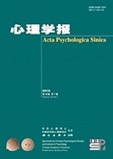Conceptually, prosocial behavior reduces externalizing problems (e.g., aggression) and internalized problems (e.g., depression) because prosocial behavior promotes positive emotions (e.g., to find delight in helping others). Therefore, understanding the development cascades of prosocial behavior tendency, internalizing and externalizing problems is of great value to the promotion of adolescent mental health.
Developmental cascades model describes the above-mentioned process, that is, the function of one domain (level or system) will affect the function of another domain (level or system); as time goes on, multiple interactions in different domains (levels or systems) will produce cumulative effects that can spill over and affect the functions of other domain (level or system). Researchers usually use longitudinal data to test a developmental cascade model. However, previous studies tend to base their conclusions on Cross-Lagged Panel Models, which cannot sufficiently answer the causally reciprocal relationship the developmental cascade model described because CLPM mixed the between- and within-person effects. The results of the within-person analysis, which takes the person himself as the control, is more likely indicating the within-person changes of studied variables and their temporal relationships, and thus are consistent with the theoretical hypothesis of the developmental cascades model. The current study attempts to test the developmental cascades of prosocial behavior tendency, internalizing and externalizing problems in a sample of Chinese adolescents, and to show how the within-person analysis and the analysis based on traditional CLPM influence the conclusions.
The demographic questionnaire together with Prosocial Behavior Tendency, Depression-Anxiety-Stress Scale and Buss Warren Aggression Questionnaire were administered in two junior schools for three years. Totally 894 students completed the three-wave investigation. Among them, the age ranged from 11 to 15 years old (12.7 ± 0.60), including 517 boys (57.8%) at the beginning of the investigation. In terms of parents' education level, 94.6% of fathers completed nine-year compulsory education, and 56.9% of them completed high school or above level education; 91.5% of mothers completed nine-year compulsory education, and 52.2% of them completed high school or above level education.
Two models of within-person analysis (RI-CLPM and GCLM) were used to analyze the data, compared with the traditional CLPM. The data fitting indexes of the three models are all acceptable, but the results are different leading to very different conclusions. Particularly, GCLM can separate within- and between-person effects; (2) GCLM do not assume continuous development in comparison with RI-CLPM. These advantages of GCLM make GCLM have accurate estimates than other two models. Based on the results of GCLM, the research showed that: (1) at the within-person level, prosocial behavior tendency has a moderate or weak co-movements with internalizing and externalizing problems. The prosocial behavior tendency measured at T1 can predict the internalizing problems measured at T2, and the prosocial behavior tendency measured at T2 can predict the externalizing problems measured at T3; (2) For the girl group, the internalizing problems measured at T2 can predict the externalizing problems measured at T3, while in the boy group, the results did not support the reciprocal relationship between internalizing and externalizing problems; (3) The public, submissive, emotional and altruistic factors of prosocial behavior tendency can negatively predict the next-year internalizing problems, and these four factors can negatively predict the externalizing problems measured at T2. These results suggest the value of prosocial behavior as the potential way to promote adolescent’s mental health, within-person analysis in the developmental cascades research, and also indicate that mental health promotion programs should take the gender difference into account.




